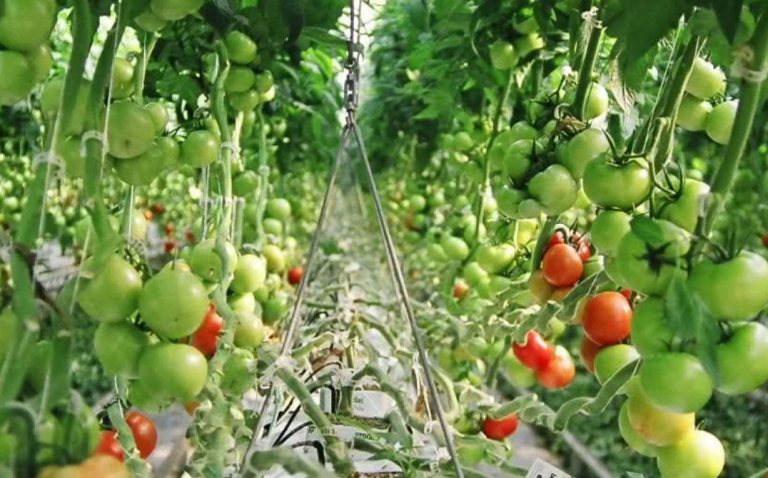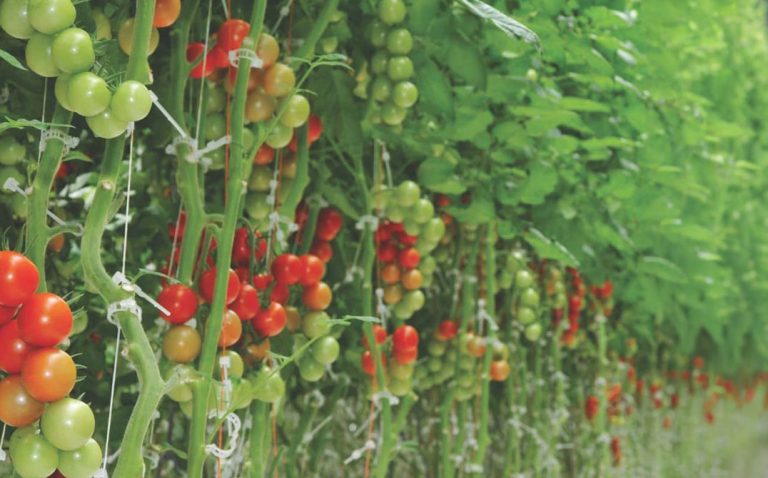As grocery stores increasingly stock Greenhouse grown vegetables, you may have noticed labels proudly stating “Greenhouse Grown” on produce packaging. But what does this term actually mean? Does it indicate better quality, sustainability, or enhanced nutrition?
Understanding what “Greenhouse grown” truly signifies can help consumers make informed choices about the freshness, safety, and environmental impact of their food. Here’s a breakdown of what Greenhouse grown labels really mean.
1. Grown in a Controlled Indoor Environment
The term “Greenhouse grown” means that the vegetable was cultivated in a controlled environment through natural pollination.
Key Features of Greenhouse Growing:
- Temperature, humidity, and light are regulated for optimal plant growth.
- Protection from harsh weather, pests, and soil contamination.
- Precise watering and fertilization to ensure consistent quality.
Why It Matters: Greenhouse grown vegetables are less affected by extreme weather conditions, leading to higher-quality, visually appealing, and more nutritious produce.
2. Often Grown Using Hydroponic or Soilless Systems
Many Greenhouses use hydroponic growing methods with 100% closed-loop drip irrigation systems.
Common Hydroponic Greenhouse Grown Vegetables:
- Cucumbers, tomatoes and bell peppers
Why It Matters: Hydroponic Greenhouse growing uses nutrient-rich water instead of soil, reducing the risk of soil-borne diseases, pests, and chemical runoff. Now that’s something to feel good about.
3. Reduced Pesticide Use and Cleaner Produce
Because Greenhouses provide a sealed and controlled environment, they require fewer pesticides than traditional field-grown crops.
Benefits of Greenhouse Grown Produce:
- Fewer chemical pesticides → Safer for consumption.
- Protected from soil contamination → Cleaner, fresher vegetables.
- Less exposure to harmful insects and plant diseases.
Why It Matters: Greenhouse grown vegetables are often pesticide-free or grown with natural pest management like bumble bees and ladybugs, making them a healthier and safer choice for your family meals.
4. Consistent Size, Shape, and Quality
Greenhouse grown vegetables are known for their uniform appearance, which is a direct result of controlled growing conditions.
Why Greenhouse Vegetables Look More Perfect:
- Even nutrient distribution ensures consistent size and shape.
- No weather-related blemishes like sun spots, hail damage, or wind scarring.
- Picked at their peak rather than picked early for transport.
Why It Matters: If you’re looking for high-quality, visually appealing produce that lasts longer, Greenhouse grown vegetables are the better choice. These consistent veggies are packed full of flavor in every bite.
5. Grown Seasonally for a Steady Supply
One of the biggest advantages of Greenhouse growing is the ability to grow crops in any season, ensuring seasonal availability.
Greenhouse Growing Provides:
- Fresh tomatoes, peppers, and cucumbers even in winter.
- A consistent supply of fresh grown produce.
Why It Matters: Buying Greenhouse grown vegetables leads to fresher produce and a lower carbon footprint. This makes them a sustainable and reliable choice for your healthy snacking!
6. Can Be More Environmentally Friendly
Greenhouse growing is often more sustainable using less water, land, and resources.
Environmental Benefits of Greenhouse Growing:
- Uses 90% less water
- Requires less land, preventing deforestation.
- Reduces fertilizer runoff and soil degradation.
- Grows up to 20x more produce then field.
Why It Matters: Greenhouse grown vegetables are the greener choice, with natural pollination and water conservation. This means you can shop for your favorite cucumbers, peppers and tomatoes
7. Labeled for Transparency and Consumer Trust
Many brands proudly label their Greenhouse grown produce to differentiate them from field-grown vegetables.
Common Greenhouse Grown Labels Include:
- “Greenhouse Grown” – Indicates controlled-environment agriculture.
- “Hydroponic” – Shows soilless, water-based growing methods.
- “Sustainably Grown” – Highlights eco-friendly growing practices.
Popular Greenhouse Brands:
- Nature Fresh Farms
- Mucci Farms
- Pure Flavor®
- Sunset® Grown
- Double Diamond Farms
- Red Sun Farms
- Great Lakes Greenhouse Inc.
- DelFresco Pure
- Topline Farms
Why It Matters: When buying produce, check for labels that specify “Greenhouse grown” to ensure you’re getting high-quality, environmentally responsible vegetables.
8. Greenhouse Grown Means Less Food Waste
Since Greenhouse grown vegetables are more consistent in quality, size, and freshness, they lead to less food waste at grocery stores and homes.
How Greenhouse Growing Reduces Waste:
- Fewer blemishes and defects mean less discarded produce.
- Longer shelf life reduces spoilage.
- Picked at their peak, minimizing waste from unripe or overripe crops.
Why It Matters: Choosing Greenhouse grown vegetables supports a more efficient and waste-conscious food system.
10. How to Identify Greenhouse Grown Vegetables in Stores
Want to ensure you’re buying Greenhouse grown produce? Look for these key signs:
Visual Clues:
- Perfectly shaped, uniform size (e.g., bell peppers, tomatoes, cucumbers).
- Smooth, glossy skin with fewer blemishes.
- Wrapped English cucumbers or pre-packaged yellow, orange and red bell peppers.
Labeling Clues:
- Look for “Greenhouse Grown,” “Hydroponic,” or “Sustainably Grown.”
- Check for brands like Mucci Farms, Nature Fresh, and Pure Flavor®.
Why ‘Greenhouse Grown’ Labels Matter
When you see “Greenhouse Grown” on a label, it means the vegetables were grown in a controlled environment, resulting in higher quality, fewer pesticides, and availability. Greenhouse grown produce is fresher, more sustainable, and often better for the environment.
Why Choose Greenhouse Grown Vegetables?
- Higher nutritional value and longer shelf life.
- Consistent size, shape, and superior freshness.
- Fewer pesticides and cleaner growing conditions.
- Availability without seasonal shortages.
- More sustainable growing with reduced water and land use.
By choosing Greenhouse grown vegetables, you’re making a healthier, more eco-friendly choice while enjoying fresh, high-quality produce.




